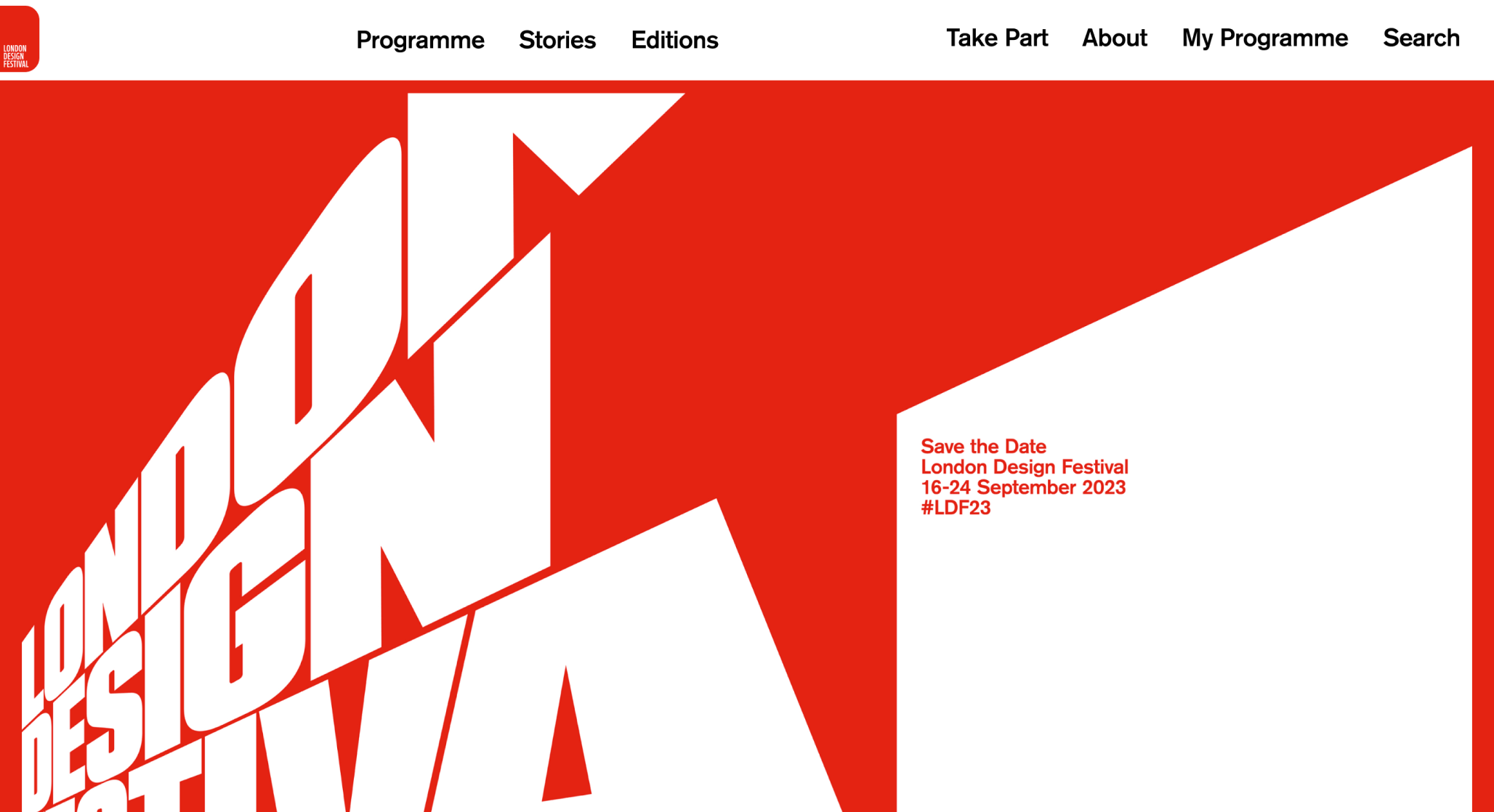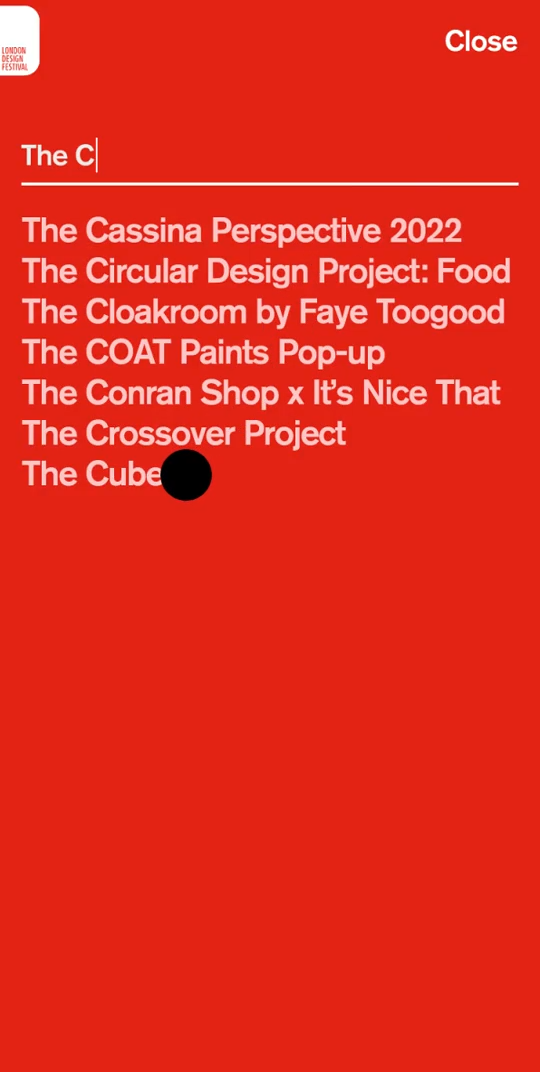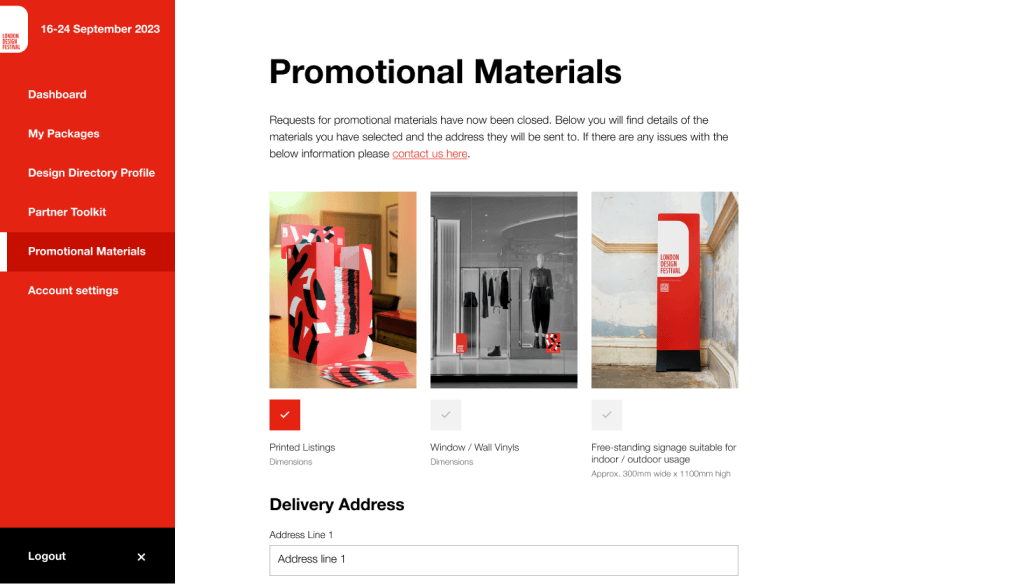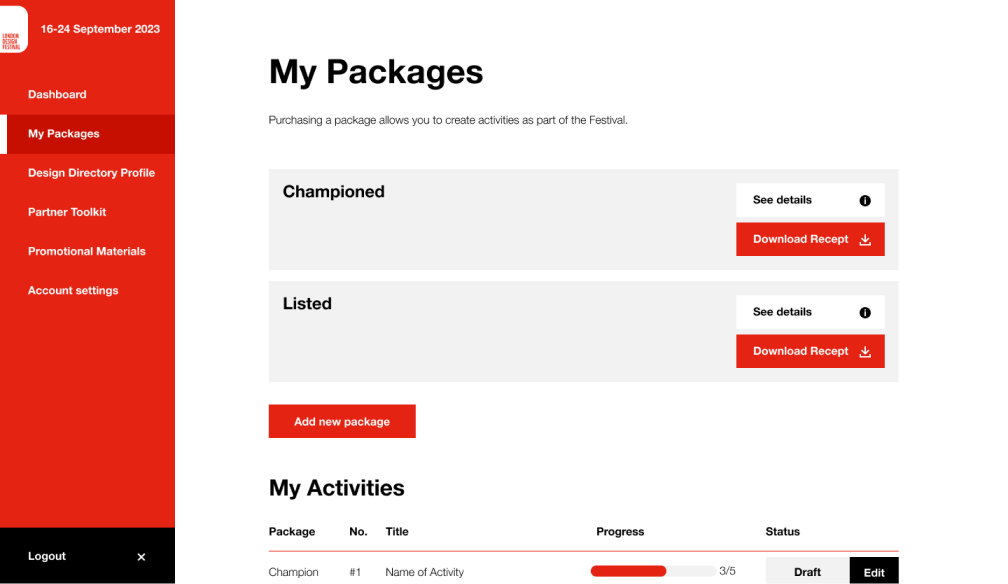
London Design Festival
London Design Festival is an annual event that brings together the London design community. They came to ON to bring clarity to their digital experience for visitors, and to make content management more sophisticated for their internal editors and partners.
London Design Festival (LDF) celebrates and promotes a range of design disciplines, bringing the London design community to life. It attracts local and international audiences to over 300 events and installations every September.
In the 18 years since their first festival, LDF has become a cultural hub for designers, international cultural and business leaders, government bodies, and a design-interested public to get together and shape the future of design. They've come a long way since their first festival, with 1.1 million visitors to date.



The brief
LDF came to us to build a platform that would increase the discoverability of events and futureproof content management as the festival evolves.
The primary goal of the project was to create a system for festival attendees that would help them with logistics, and improve the discoverability of individual events.
Behind the visitor-facing site, we needed to create a platform that would effectively support the huge amount of content that would be added by different user groups, from festival organisers to partners setting up their own events pages.
Finally, the website needed to act as a scalable foundation that could evolve with future brand expression. It also needed to be able to change to suit its dynamic purpose throughout the year, from off-season to festival week.
Personalisation and discoverability
Our goal was to make the festival experience easier to navigate for visitors. We introduced a new tool that allows users to create their own personalised program complete with logistics and recommendations.
On festival day, LDF is huge. There's hundreds of events to choose from on an array of different topics. As you can imagine, the risk of FOMO is high. To eliminate this, we built a system that allows visitors to create their own bespoke programmes. They simply have to pick the events they like the sound of, and the logistics are organised for them.
The user searches for events using an custom-built advanced search engine with a dedicated filtering system. Events are then saved to a My Programme wishlist over the duration of the festival. A Mapbox integration shows the user where the event is on a map, and our bespoke calendar UI gives them a view of their complete personal programme.
Most usefully, however, the system offers information about events that are happening nearby, or on the day that they have chosen to attend the festival. The result is a system that takes stress away from the user, and increases discoverability for all the fantastic events held festival-wide.




Flexible content management
We created a dedicated dashboard for LDF partners to support effortless content upload, reduce errors and increase security.
The volume of events and the handling of multiple festival phases required a sophisticated approach to content management. From an editor's perspective, the platform needed to be simple, fast, and user-friendly. From a technical perspective, endless extensibility and security were essential. We therefore built the LDF platform with the headless CMS Storyblok as it provided the perfect balance of a simple editing experience and live preview capabilities in a highly flexible package.
Behind the visitor-facing events website, we built a partner dashboard. This is an area where partners can add events, manage their company information, download supporting materials and resources, and pay for their tiered partnership packages.
The dashboard was developed in Ruby, using the Ruby on Rails framework, with dedicated error tracking and application monitoring by Honeybadger. This system alerts LDF if any errors occur during editing, and identifies which customers are affected so that fixes can be made instantly to ensure visitor experience is not negatively impacted.
Future-proofing visual design
The visual representation of the festival is constantly evolving. We created a dynamic design system that supports future modifications in brand expression.
The cornerstone of the LDF brand identity is the combination of a fixed framework that is activated by annual 'campaign' identities created by the world's largest independent design consultancy Pentagram. Their framework both responds to, and anticipates trends in design and typography. Our job was to build the digital canvas to which these campaigns can be applied with minimal effort from the LDF team.
Whilst the previous annual refresh process required extensive code changes that were both time consuming and prone to error — replacing headers, banners and other supporting graphic assets — we created a new system that allows LDF to centrally manage all the assets and make content changes themselves.
A website for all seasons
The purpose of the LDF website changes before, during and after festival week. Our modular approach allows it to transform with the seasons.
We approached accessibility via inclusive design methodologies — instead of fixing accessibility issues towards the end of the build, the site is planned, designed and developed from the ground up to be accessible.
We gave LDF detailed guidance and control over key accessibility features, from optimising images for highest performance and lowest energy usage, setting up image alt texts, defining appropriate labelling and placeholders for forms and, utilising semantically correct headings, texts and backgrounds as standard.
Designing for accessibility
Collaborating with the digital design agency Koto, we created a UI design system that is intuitive, accessible, and energy efficient.
We worked with our digital partner Koto on the UI designs for the personalisable visitor programmes. Here, we focused on creating user interfaces that were grounded in user-centred design principles. Together, we approached accessibility via inclusive design methodologies — instead of fixing accessibility issues towards the end of the build, the site was planned, designed and developed from the ground up to be accessible.
Our system gave LDF guidance and control over key accessibility features, such as setting up image alt texts to cater for visitors using screen readers. We defined appropriate labelling and placeholders for forms that utilised semantically correct headings, texts, and backgrounds. We also optimised imagery for the highest performance and lowest energy usage to reduce screen load times. The result is a highly responsive UI system that feels intuitive to visitors as they create their own festival programmes.

The result
We're proud to have created a website that aids visibility and planning for festival attendees, as well as supporting LDF and their partners with intelligent content management.
The success of the new platform has led to a close relationship with LDF.
We are proud to offer our continued support across all of their digital properties — including their sister event London Design Biennale — as their official technology partner.









